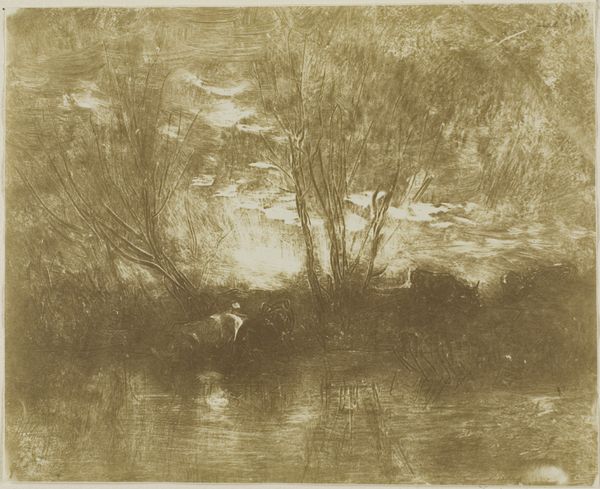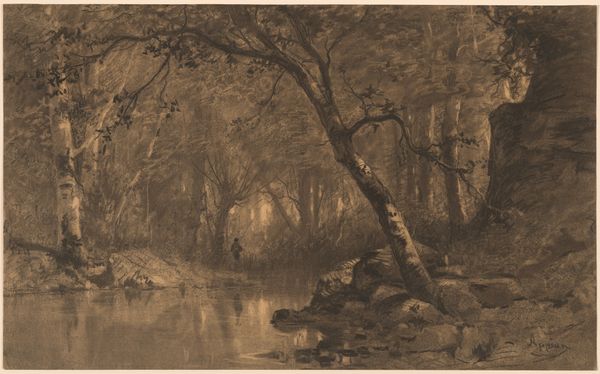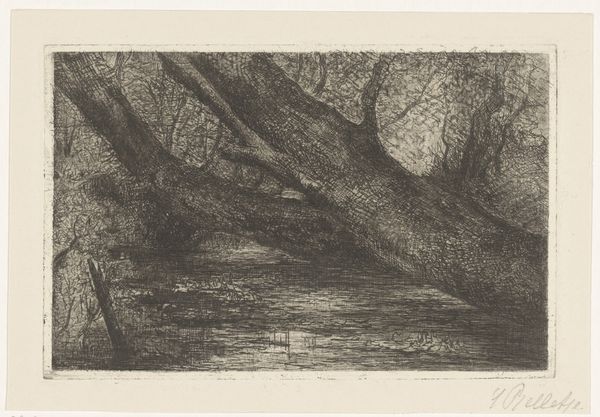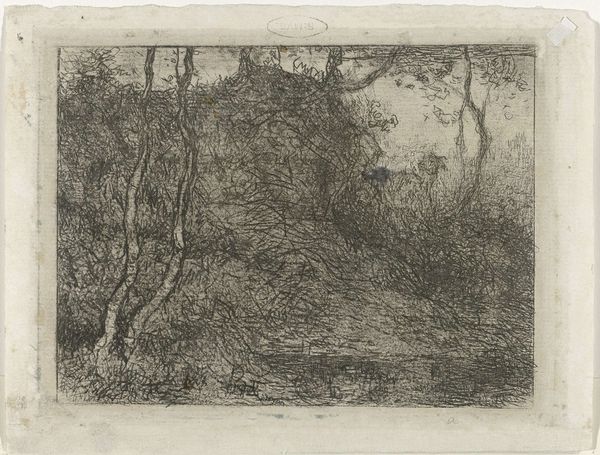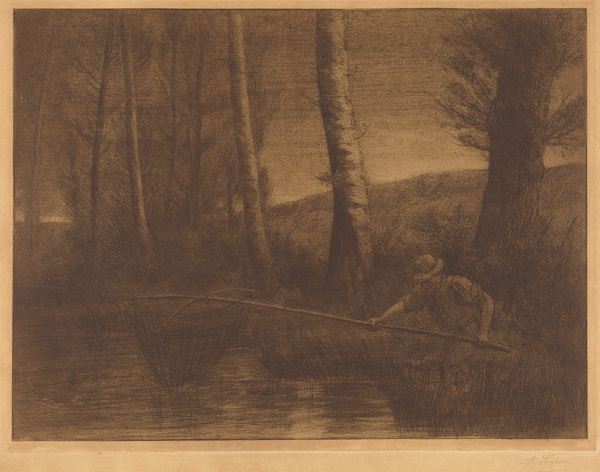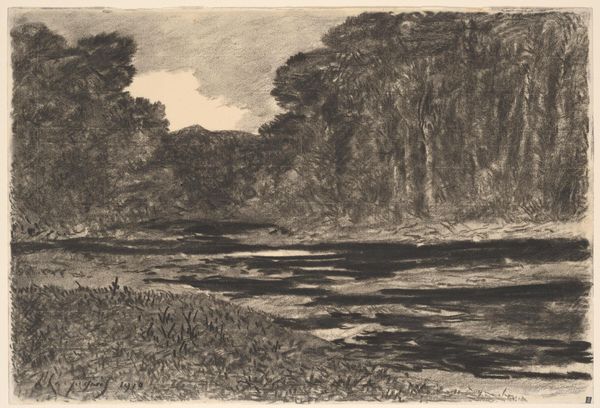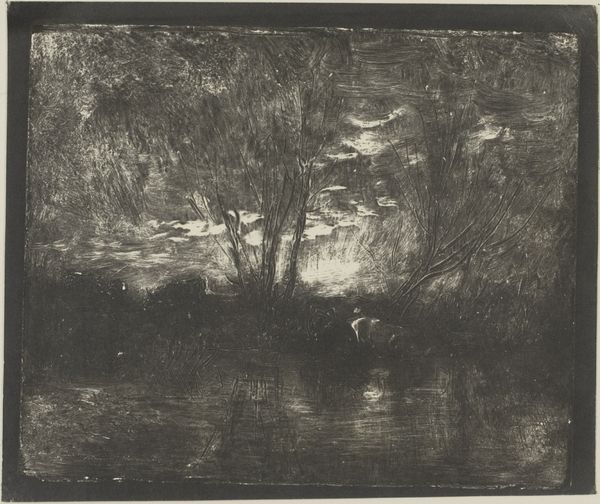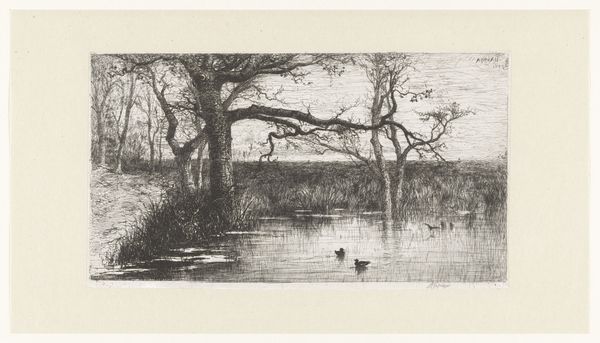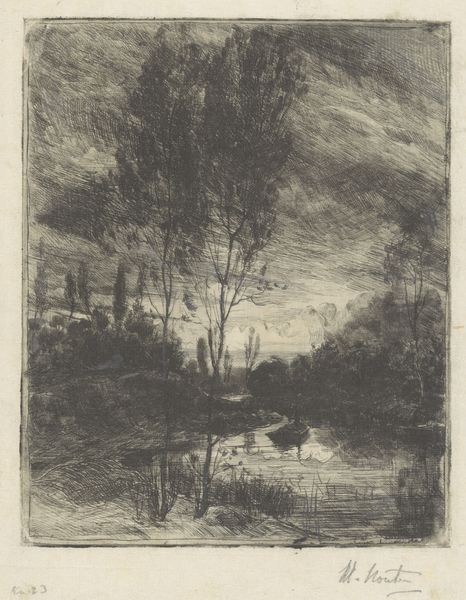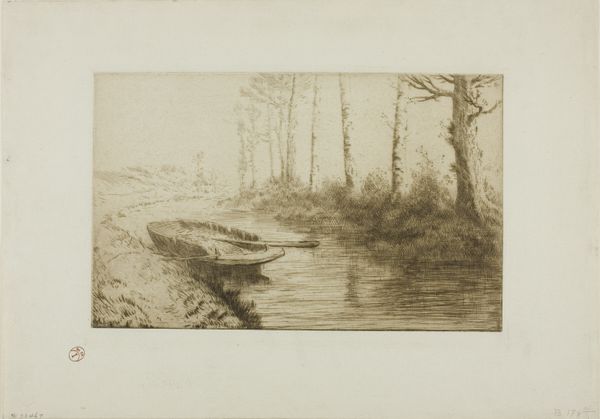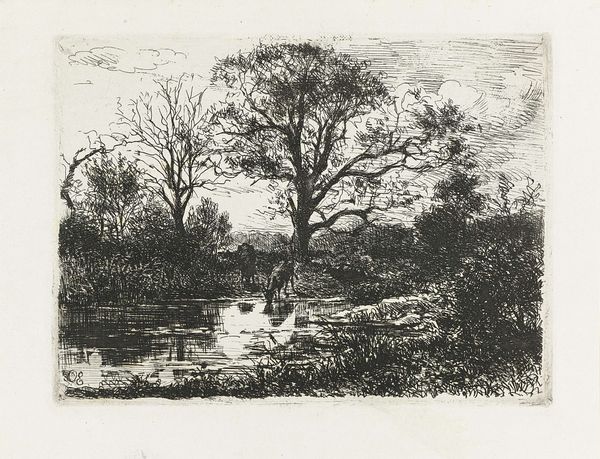
print, etching
# print
#
etching
#
landscape
#
forest
Dimensions: height 154 mm, width 238 mm
Copyright: Rijks Museum: Open Domain
Editor: Here we have Willem Steelink's "Trees Along the Water," an etching made sometime between 1836 and 1913. The details are amazing, but the dark, dense composition creates a rather melancholy atmosphere. What do you make of this particular landscape? Curator: Landscapes, especially those featuring forests and water, often become vessels for our cultural memory. Water, eternally reflecting, is deeply linked to ideas of memory, the subconscious, and the passage of time, wouldn’t you agree? Editor: Absolutely. It’s interesting that you mention the subconscious. The figures in the background are barely noticeable and seem dwarfed by the trees. Curator: Note how the artist uses light and shadow. What effect does that contrast achieve, and what emotions are invoked for you, looking at that interplay of light and dark? The dense network of branches and the shrouded figures might evoke a sense of mystery. Forests can also represent the unknown, our fears, our deepest selves… it's like peering into our very minds. The figures diminish our focus and invoke mystery while emphasizing a person's role or the role of the individual within the natural world, suggesting fragility. What do you make of the reflections in the water? Editor: The reflections make everything seem unstable and doubled, maybe indicating uncertainty? Curator: Precisely! The reflection might symbolize self-reflection, but with an ethereal touch, hinting at an introspective state. Landscapes invite contemplation and act as symbolic mirrors, mirroring our emotional states and linking us back to nature's power as the origin of spiritual wisdom and self-knowledge. Editor: That’s fascinating, I didn't realize landscapes held so much cultural weight and memory. Thanks! Curator: Indeed! Every stroke and shade carries echoes of collective and personal experiences. It really highlights art's ability to quietly hold a mirror up to us.
Comments
No comments
Be the first to comment and join the conversation on the ultimate creative platform.

